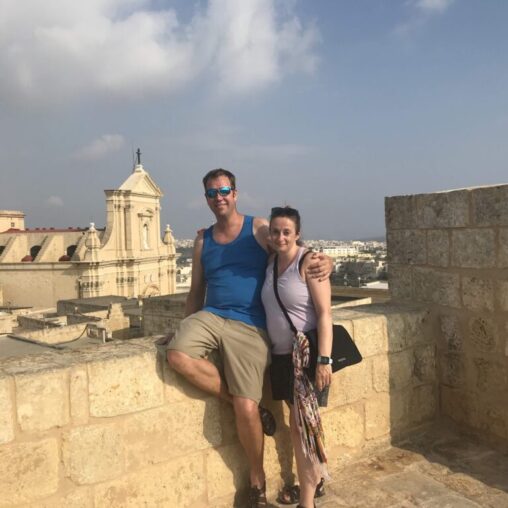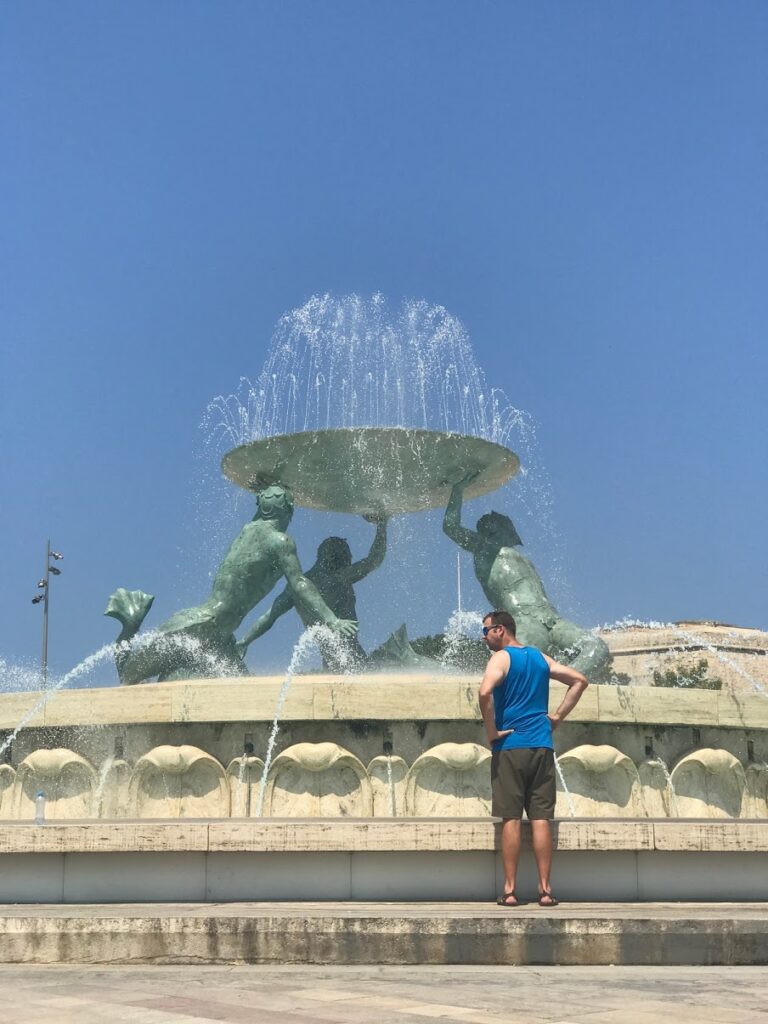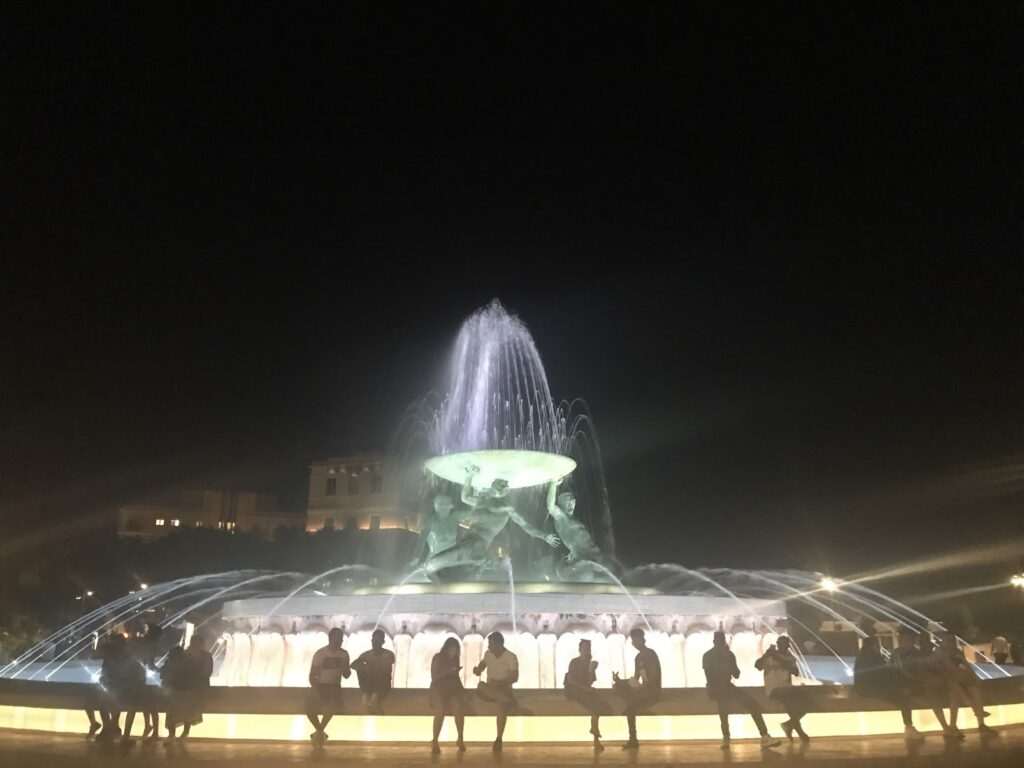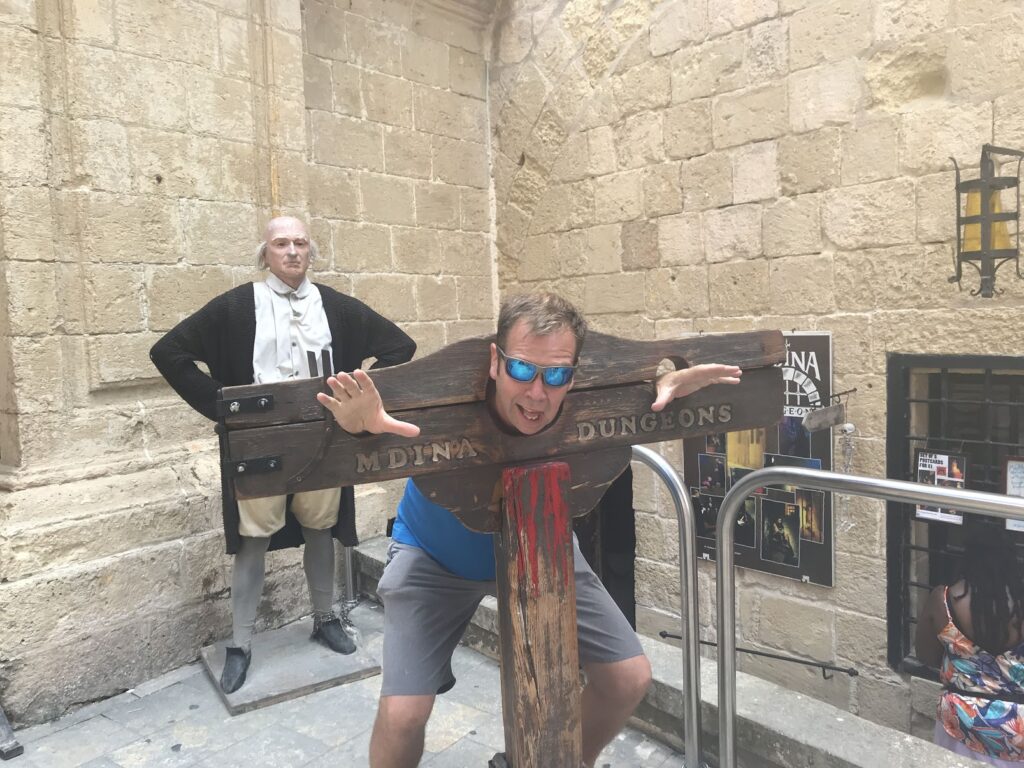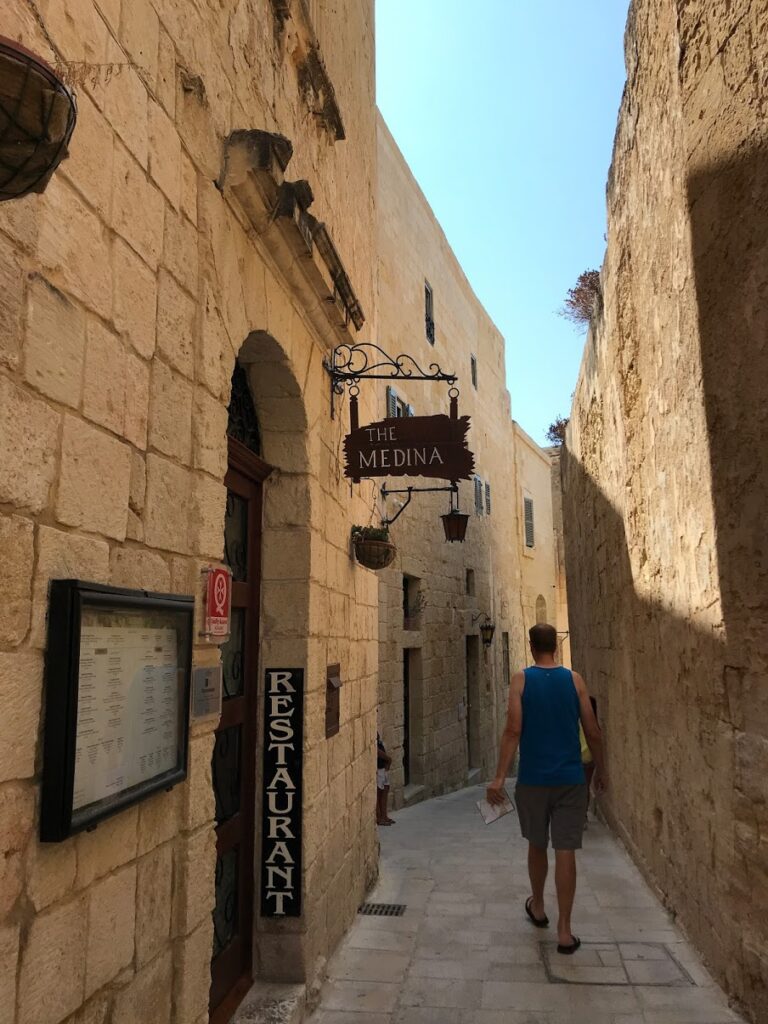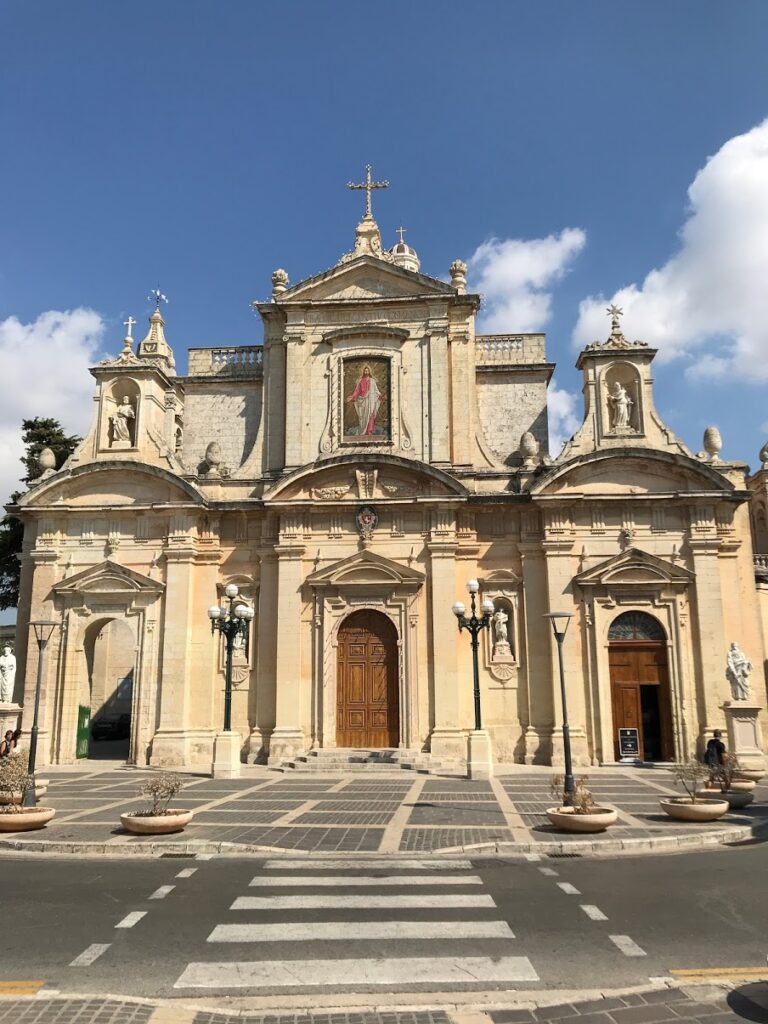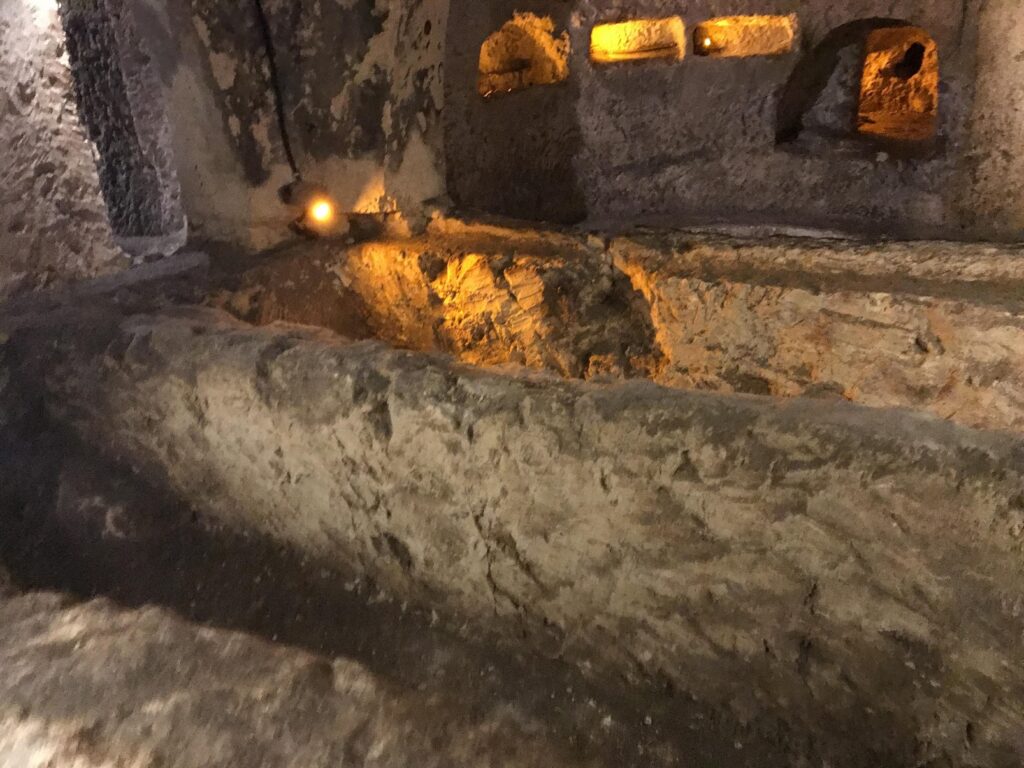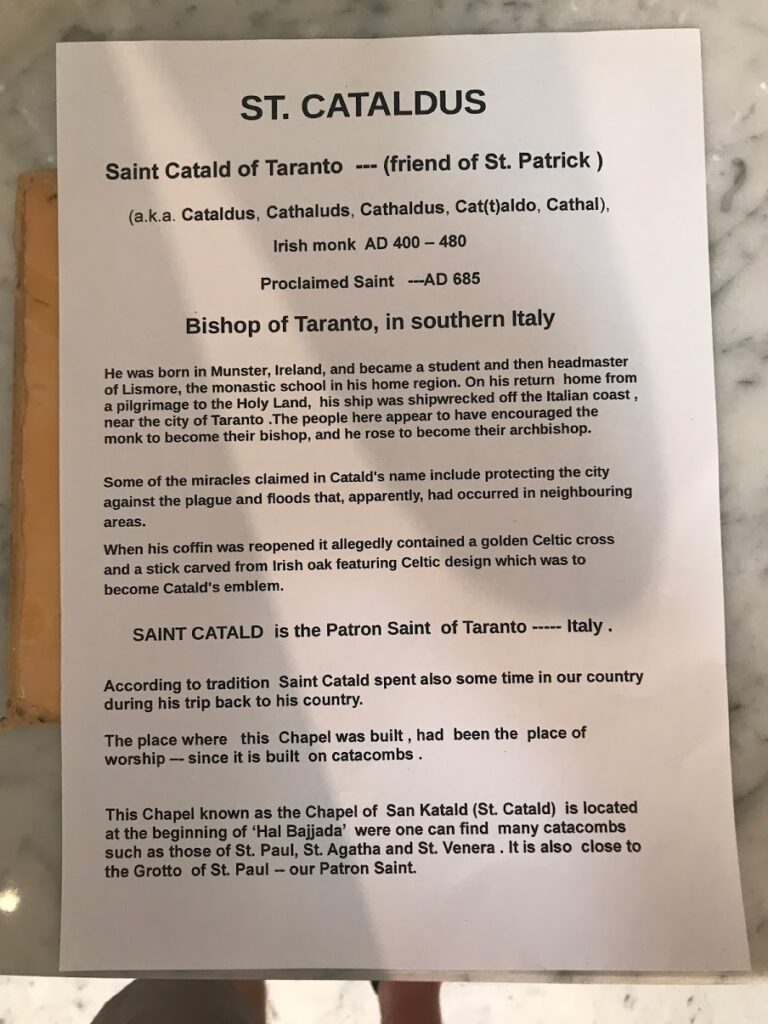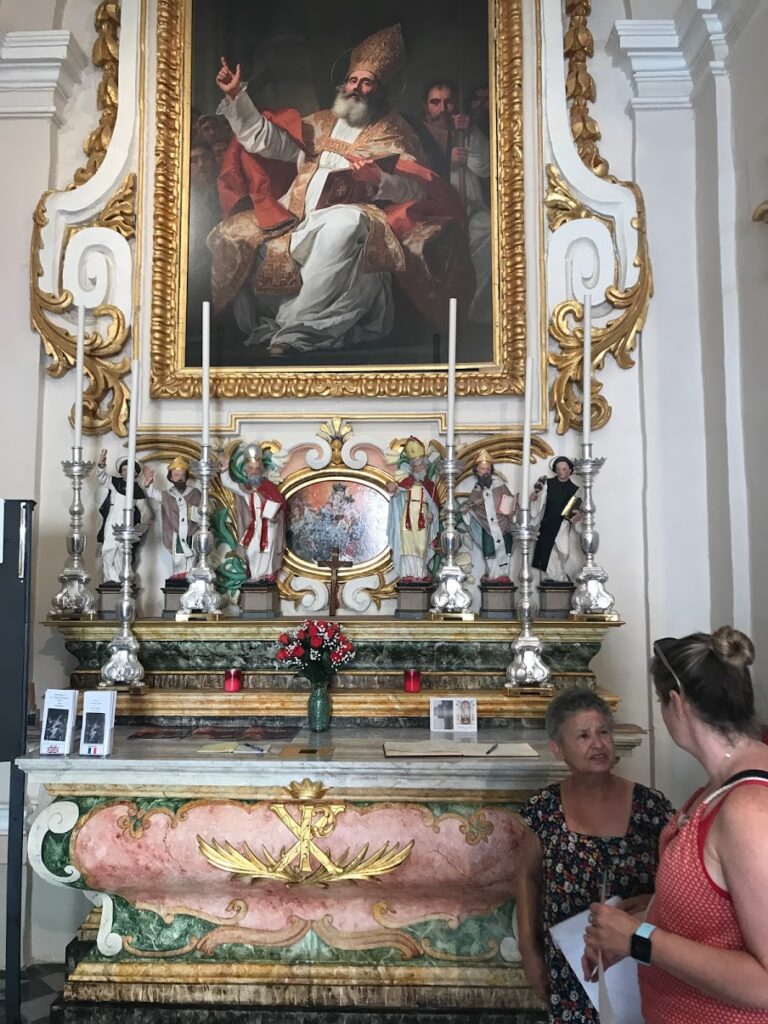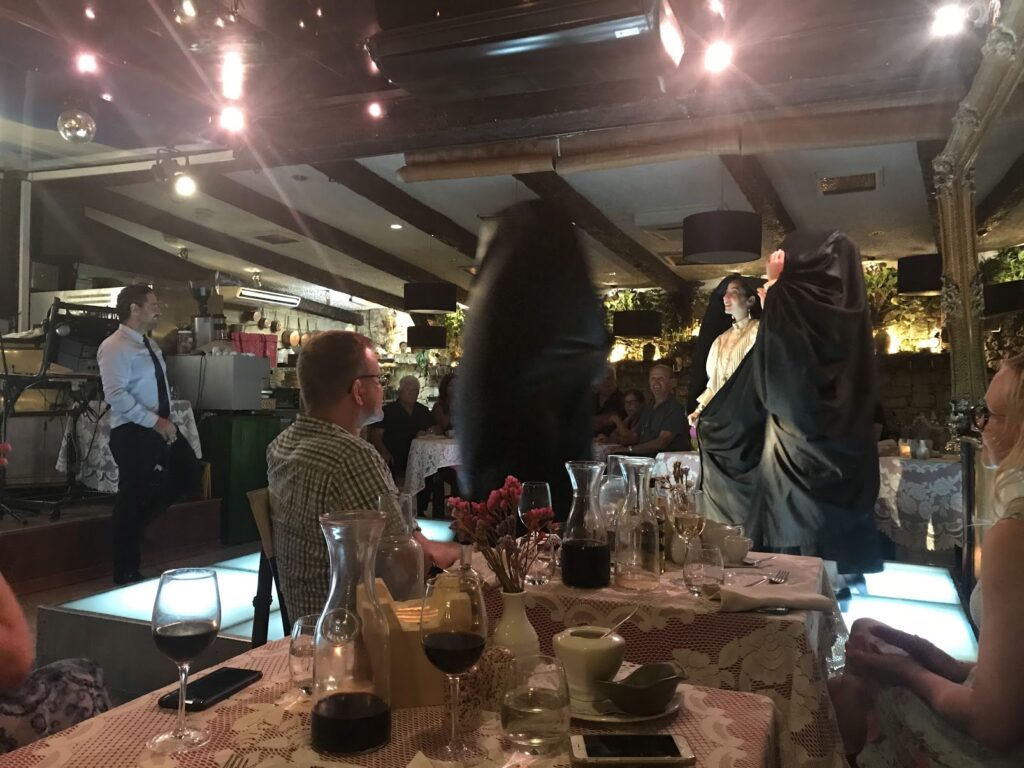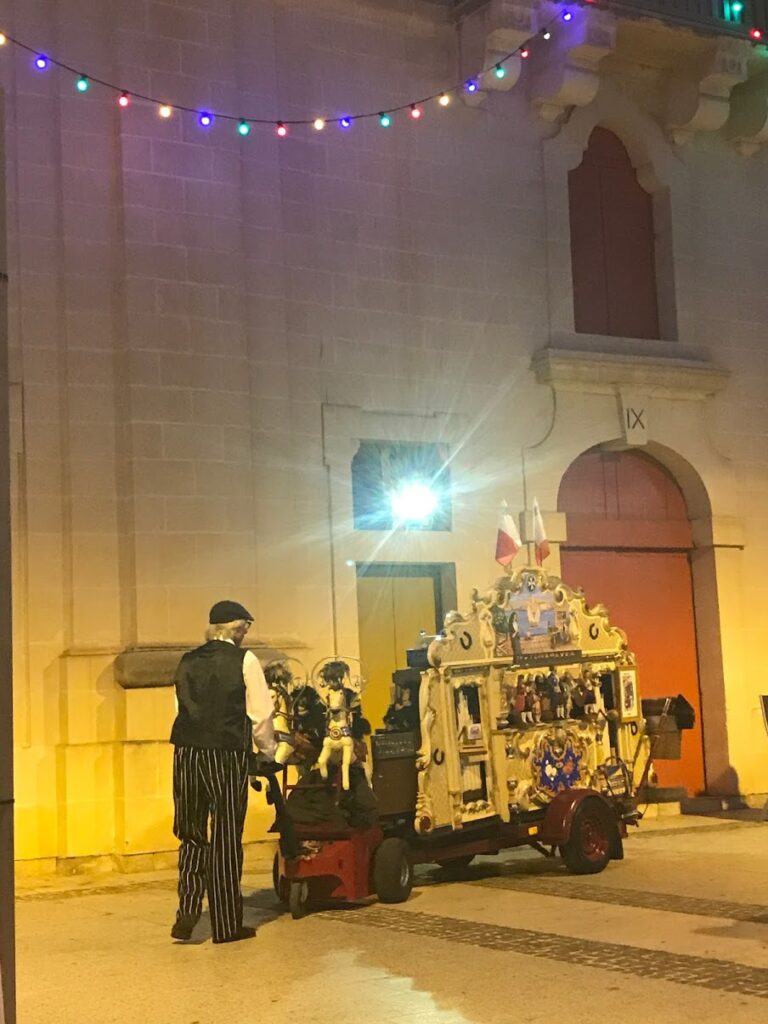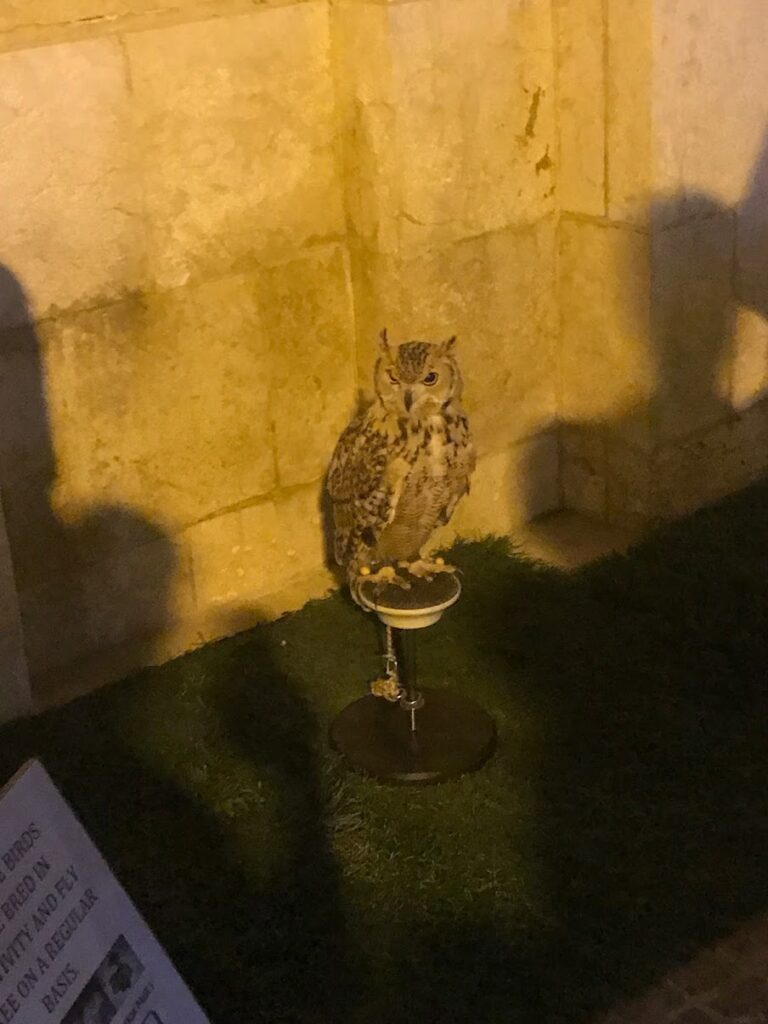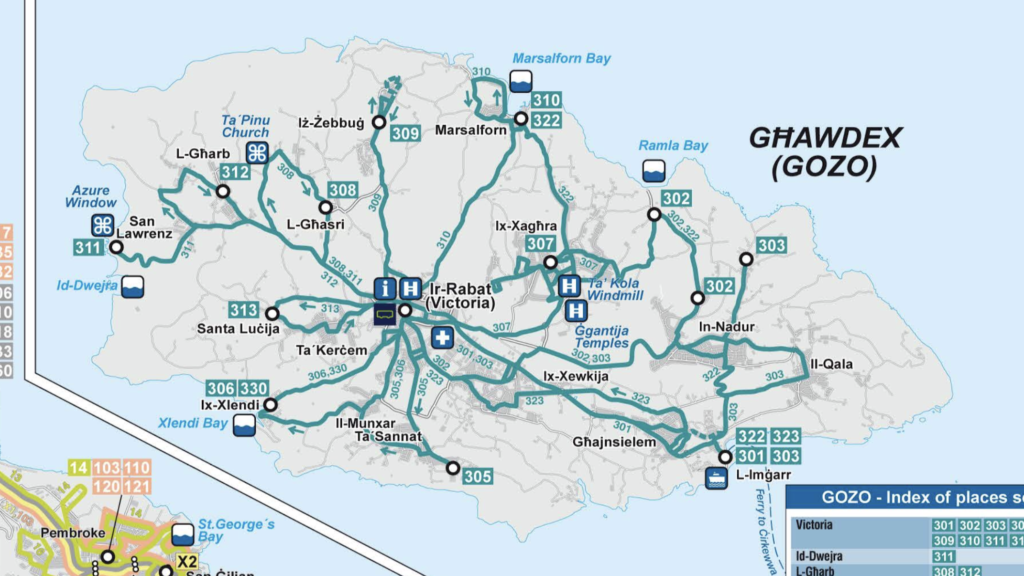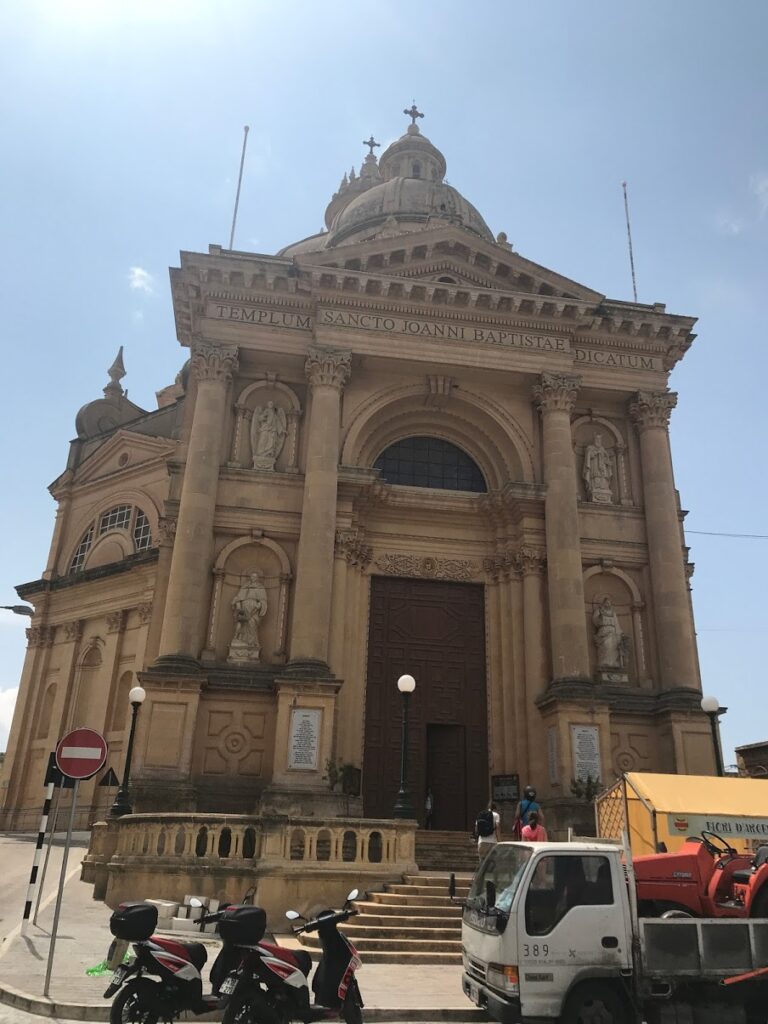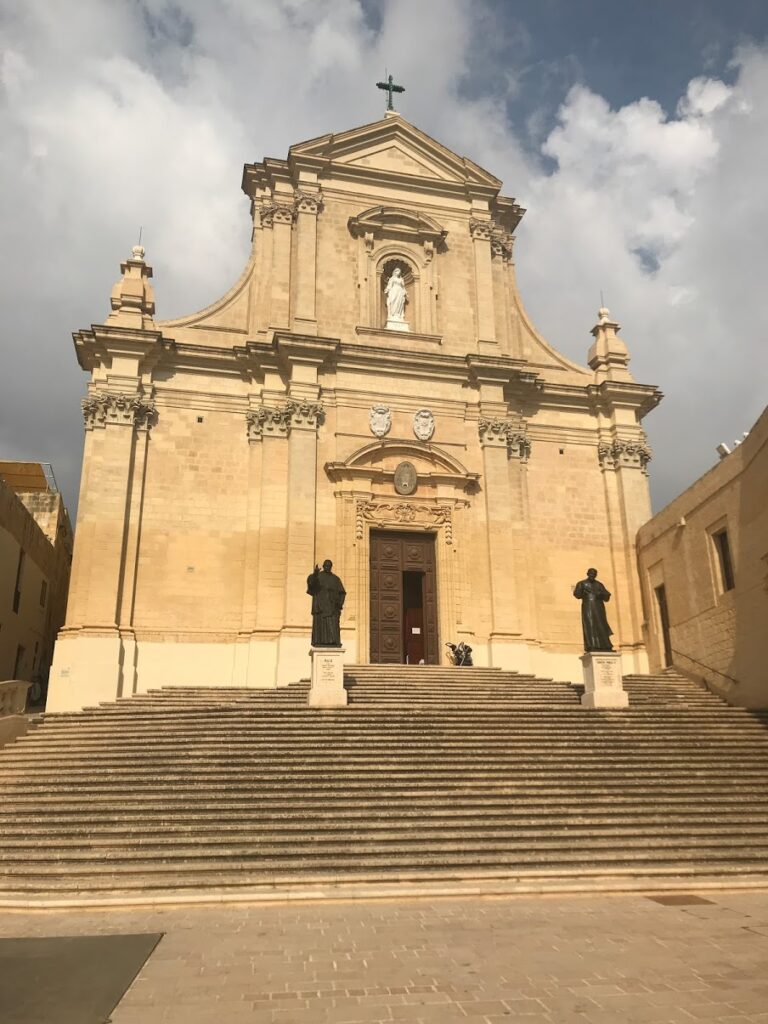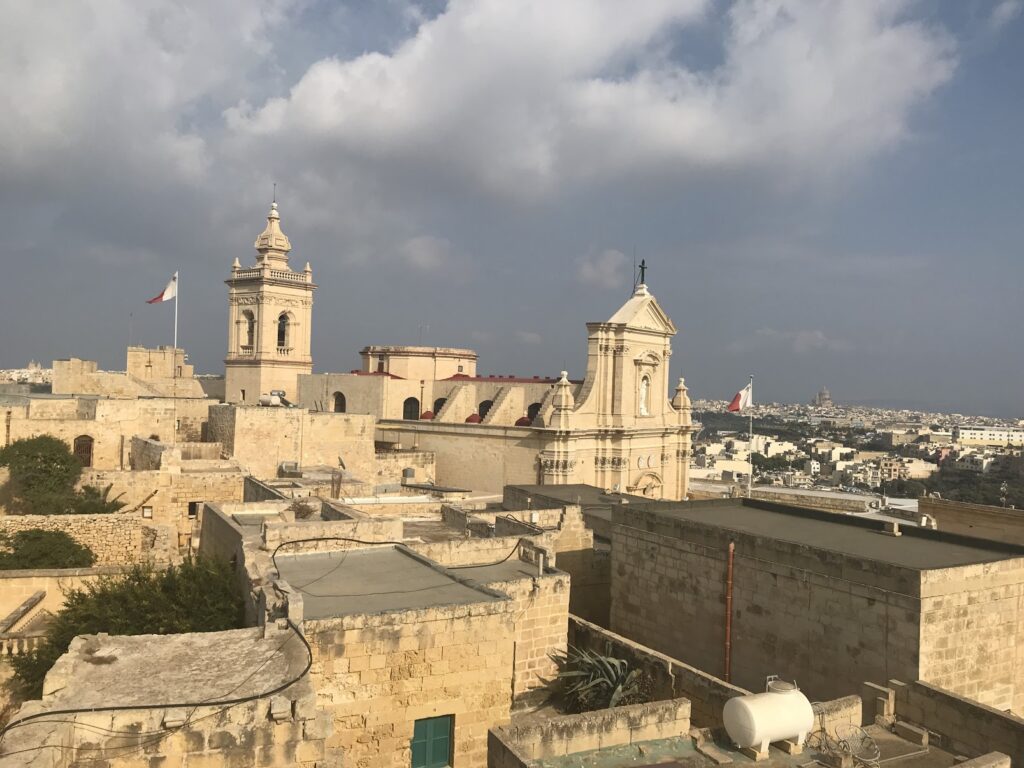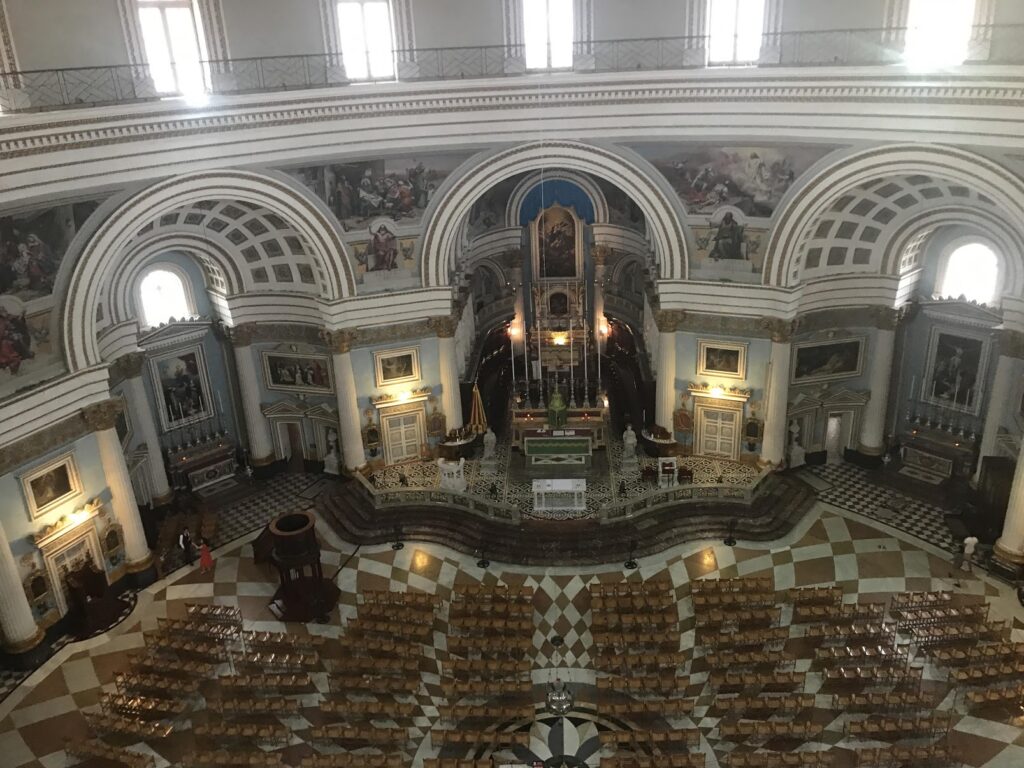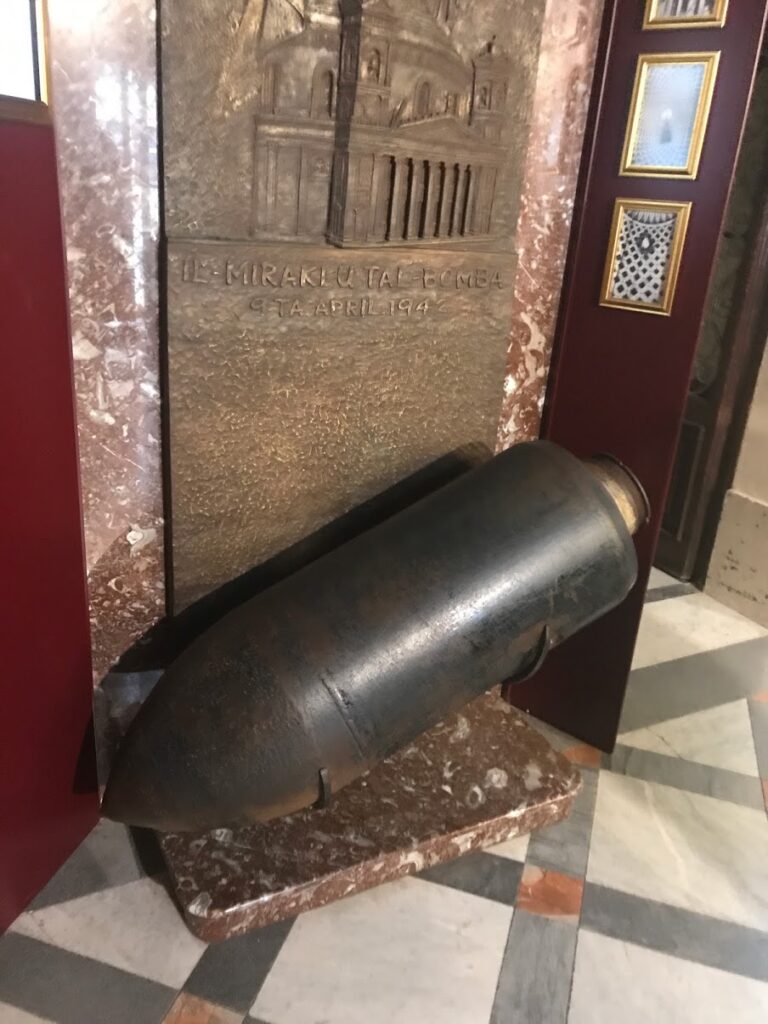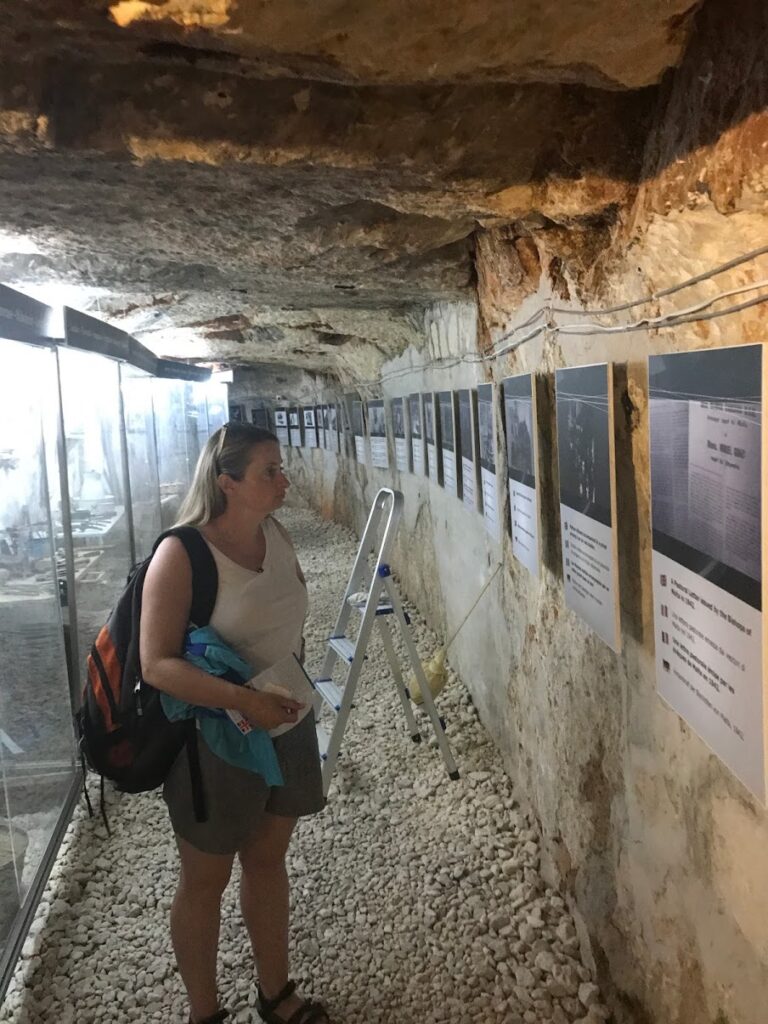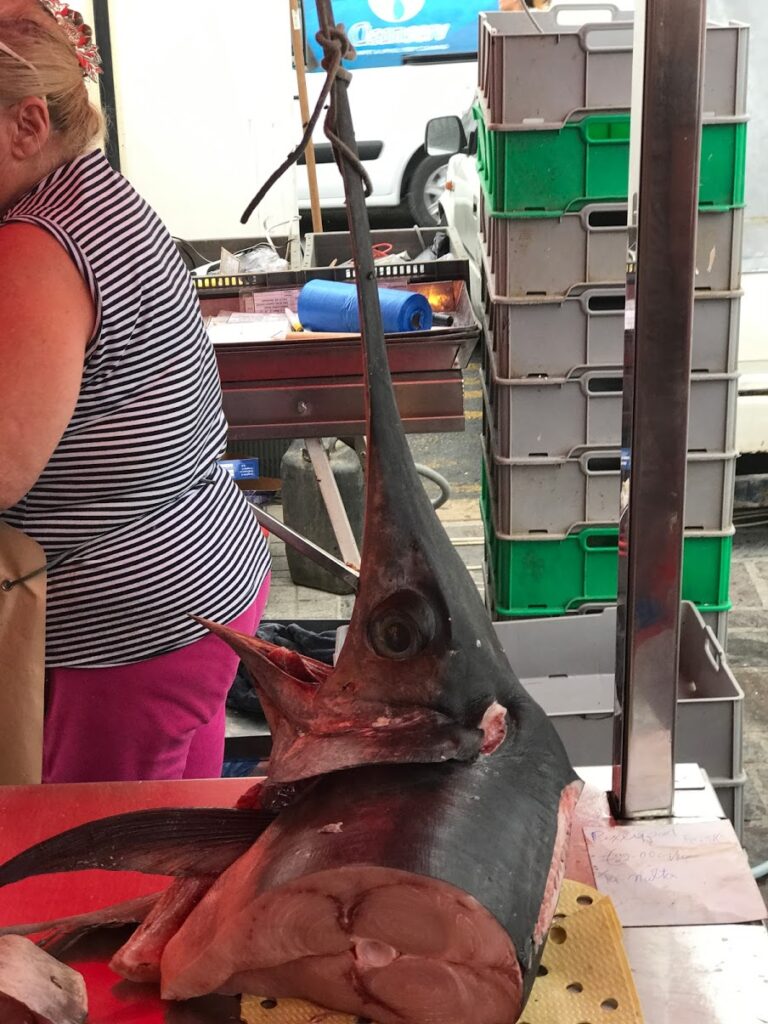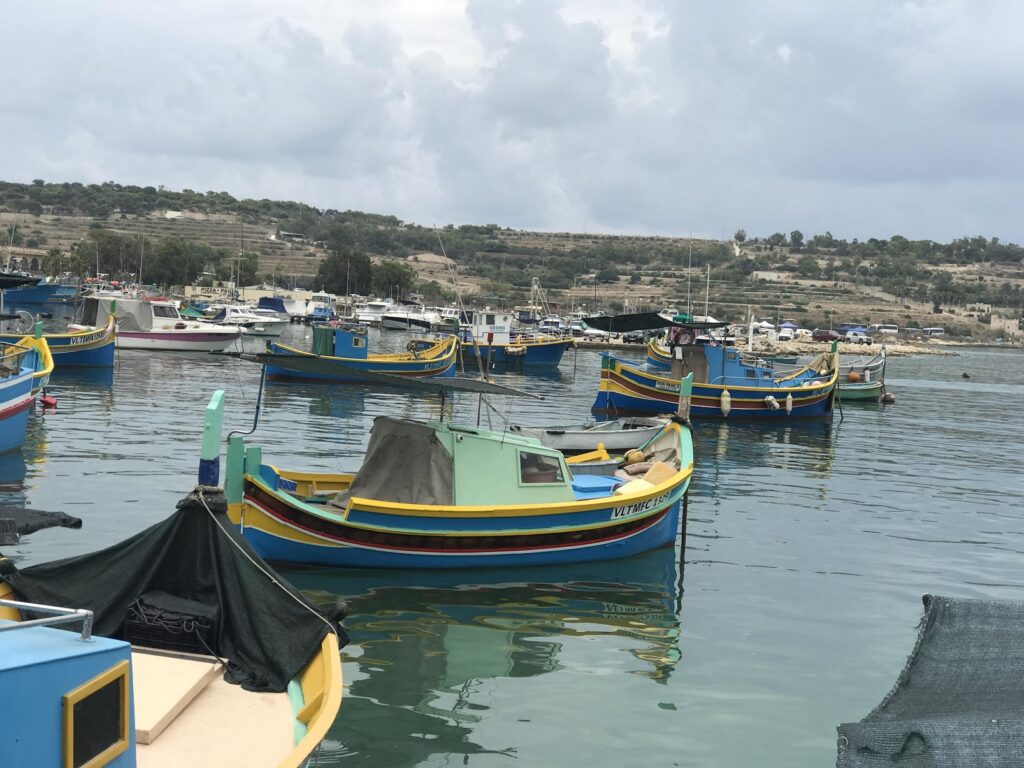After an exciting 19 days in Jordan, we spent a slower 9 days in Malta. Malta is a small island that lies about 80 km south of Sicily, Italy. It is east of Tunisia and north of Libya. It is the tenth smallest country in the world but fifth most densely populated. Its population is about 500,000 people. It is about 27 km long and 14.5 km wide. The country is actually made up of three islands, Malta, Gozo and Comino. Malta is part of the EU.
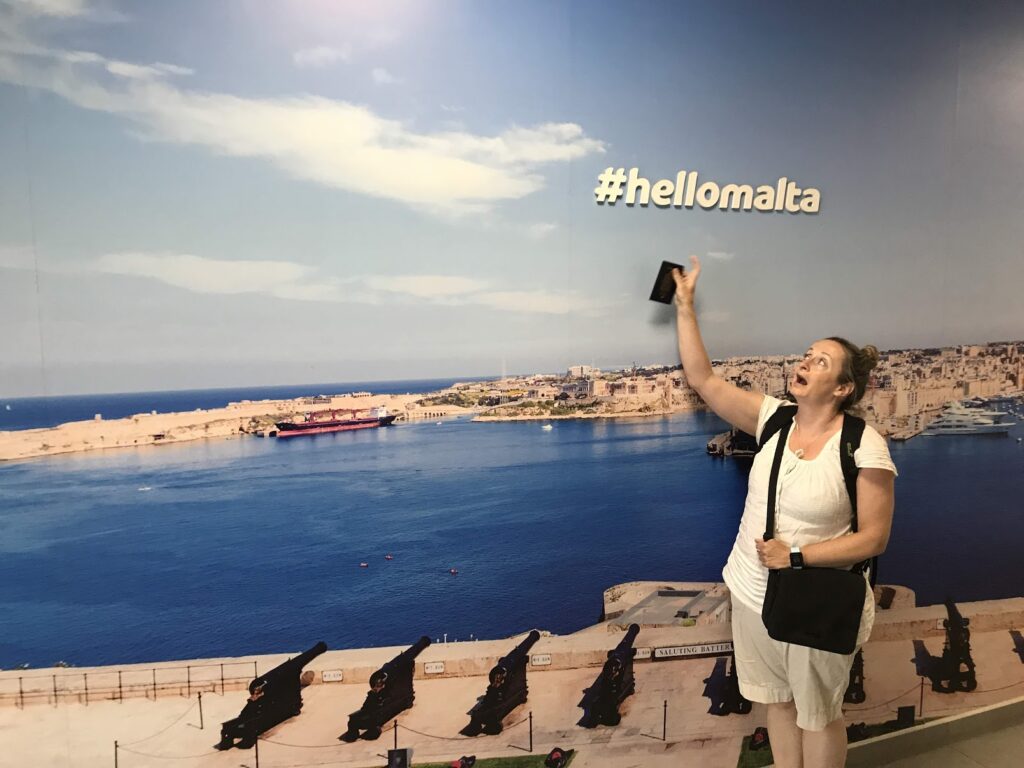
Some people assume that it is part of Italy and that people speak Italian. However, despite its proximity to Italy, the Maltese language has more in common with Arabic than it does with Italian. Malta was a British commonwealth for many years. During World War II, it was very heavily bombed by Mussolini because it was part of the British Commonwealth. Its location was also very strategic for shipping and for access to all of Europe and Africa.
We stayed in a town called Mosta which is almost in the middle of Malta. Mosta is a quieter town but is well located for accessing the whole island. When we arrived in Malta, we bought a 7 day bus pass which allowed us to take the bus an unlimited amount for the seven days. It was 21 euros but one single ticket (good for 2 hours) costs 2 euros. We took at least two rides each day so it was well worth it. There was another option which was 12 tickets for 15 euros (about 1.25 euros per ticket). If you are only going to do two rides per day, then it might be worth your while to get this option. For six days you can use your 12 tickets, and then on the seventh day you could spend 4 euros for a total of 19 euros. If you plan to take more than two rides on any days then it is worth the 21 euros.
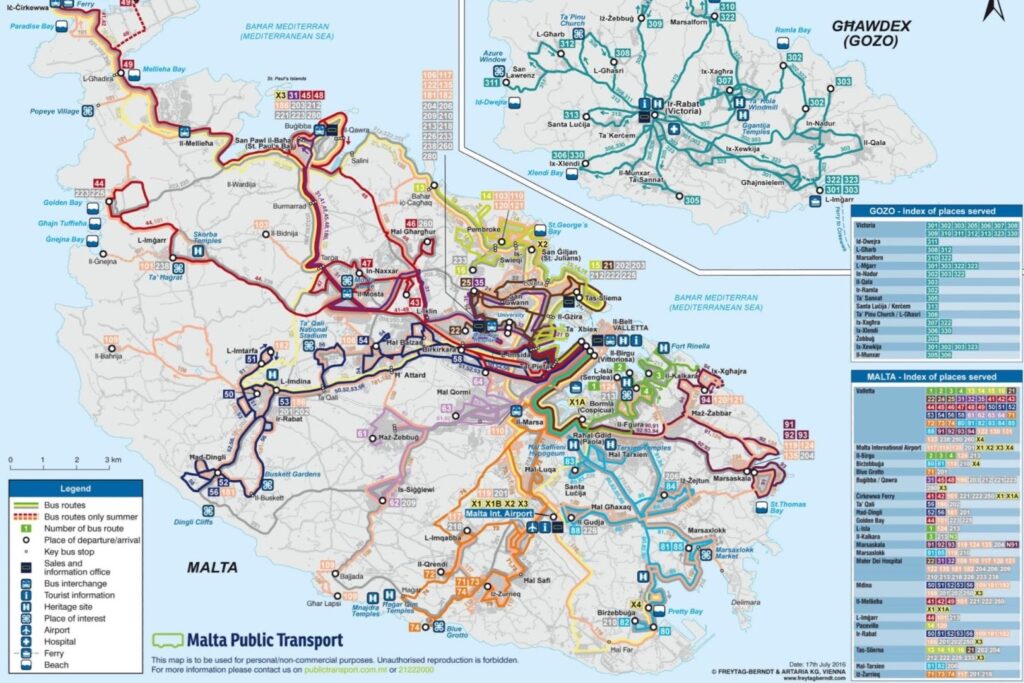
We stayed in an AirBnB in Mosta with Massimo. His wife and kids were away so it was just him. He was a wonderful host. We had our own room and our own bathroom. There was another room that they rented out that also had its own bathroom. The room also included breakfast including yoghurt, fruit, toast, cereal and coffee/tea. Massimo was extremely helpful with giving suggestions/ideas for day trips and even gave us a ride one day. We don’t often like to share with the homeowners but in this case he was very hospitable and generous.

On our first day, we took the bus into Valletta for a free walking tour. We were slow to get going that day so we ended up going in later in the day and doing an evening walking tour. Before the tour we had explored much of the same areas we would see during the tour. Valletta is the capital of Malta and is built on a hill top. Its history is greatly influenced by the Knights of St. John. The Order of St. John or the Knights Hospitaller was a group of individuals (catholic military order) dedicated to St. John the Baptist founded to provide care for the sick, poor or injured who were coming to the Holy Land. It was headquartered in Malta from 1530 to 1798. It is still providing first aid care through St. John’s Ambulance today.
Malta History in a Nut Shell: Malta’s pre-history dates back to about 5900 BC at which time settlers likely from Sicily came looking for new land to farm and live on. They were pagans living in sandstone caves around the island. Malta is however not a great place for farming given its rocky landscape and its lack of fresh water (which today is brought in from Sicily). After a couple of centuries, it was left uninhabited. There was a second attempt to settle Malta around 3850 BC but again it was left uninhabited around 2350 BC.
In 870 BC, the Phoenicians arrived from Lebanon and established it as a trading post with other countries. They call it “Maleth” meaning safe haven. It is from this Phoenician era that Malta derived its language that is similar to Arabic (Semitic-based language) but with Roman script. In 255 BC, the Romans take Malta from the Phoenicians and establish an administrative centre in Mdina. The name becomes “Melite.” The Romans begin to introduce the Roman Catholic religion which still today is the main religion in Malta.
The Byzantines briefly occupy Malta beginning in 533 BC. However, in 870 AD, Arabs from North Africa attacked the island and slaughtered everyone living there. In 1048 AD, Muslims and their slaves rebuilt the city at Melite and rename it Medina (or Mdina). In 1127, Malta is given to the Normans belonging to the Crown of Sicily. Effectively, the Muslim religion is stamped out and the Maltese language begins to evolve from its original Arabic.
Malta was gifted to the Knights Hospitaller in 1530. They saw it as an opportunity to establish a permanent home and began to build hospitals, banks, etc. Charles V wanted them to protect Rome from an Ottoman invasion. The Knights had to become a militant force protecting the island and Rome from multiple invasion attempts. In 1565, the Great Siege took place with 40,000 Turkish troops attacking the meager Maltese troops, only 9000 strong. It lasted for 3 months, 3 weeks and 3 days and ultimately the Turks left in shame, perhaps the beginning of the end of the Ottoman Empire. The Order of St. John began to rebuild Malta and Valletta under the leadership of its Grand Master.
In 1798, Napoleon takes Malta with minimal resistance. He abolished slavery and extended education for everyone. They spend more time ransacking churches and stealing great works of art. There is an interesting story we heard about Napoleon taking the dagger of the De Valette (the Grand Master). However, the Maltese swear he stole a replica and they kept and hid the original. They painted much of the gold with black paint to avoid it all getting stolen.
In 1800, the Maltese asked the British for help getting rid of the French. The British forced out the French and Malta became a British protectorate. The British essentially wanted it as a naval and military fortress in a prime location between Europe and Africa. During WWI, Malta was established as a military hospital for the British forces injured in the Mediterranean. In WWII, Malta was heavily bombed by the Italians because it was part of the British Empire. Malta however fought back and caused a lot of damage to Italian aircraft. King George awarded Malta with the George Cross for bravery which now adorns the Maltese flag.
In 1947, a new constitution was created re-establishing self-rule in Malta. Over the coming years, the British government and the monarchy began to withdraw more and more from Malta setting a course of action for independence. In 1964, Malta campaigns for and wins independence from Britain. Since 1974, Malta has been its own nation and not occupied by another state. In 2004, Malta joined the EU. It is a republic with both a president and a prime minister.
Back to the present… Every day at noon and at 4pm, there is a ceremonial firing of cannons over the harbour. We were positioned over the cannons at 4pm but discovered that it was not every day… more like every day except Sunday. We did not see the cannons fired… disappointing. The pictures below are from our day of strolling around Valletta and the walking tour we took. The history above is what we learned during the walking tour.

The next day we went to Mdina and Rabat. Mdina was the administrative centre before Valletta. It is a UNESCO World Heritage site. We wandered the walled city through its narrow streets enduring scorching heat. The temperature in Malta for most of our visit was in the low 30s but the humidity made it difficult to endure. After exploring Mdina, we wandered around Rabat. The highlight of Rabat for us was seeing the catacombs. There are multiple catacombs that you can pay to go into in Rabat. However, if you can find the St. Cataldus Catacomb I think you will get a good sense of what they are all like. To enter this one, you just need to give a donation. It is not huge, but I feel like if you see one you probably get the idea. The catacombs are spaces under churches that have been dug out of the stone to lay bodies to rest. Clearly the bodies are long gone now but imagine a honeycomb like maze carved out of the stone in which they laid to rest the bodies of parishioners. The little old lady collecting donations was very informative and made an immediate connection with Nic.
We went to Sliema and St. Paul’s Bay the next day. It was ugly hot and difficult to enjoy exploring. We wandered around a bit but it felt like we spent more time trying to find shade. We did find one place sitting on the rocks on the shore enjoying the breeze coming off of the sea. We found a mall which was a nice reprieve from the heat. We decided to take another bus to Buggiba to go to a movie. We were the only ones in the theatre and we watched The Art of Racing in the Rain.

We had been planning to go to a dinner and cultural show at a restaurant near our place in Mosta. It was called Ta Marija which is named after the original owner Maria (Marija). You can buy a package which includes a ride to and from your hotel anywhere in Malta. It didn’t make sense for us as we were staying less than a five minute walk away. We had a set menu for 25 euros. This included a starter was bruschetta and raviolis. I chose rabbit which is a big Maltese delicacy. Nic had a fish called Breem. There was a dessert cart and we chose a few different things from the cart. The show was interesting. There was different dances done on a dance floor that raised up. I got brought up for one of them which was rather interesting. Needless to say I will not be on dancing with the stars any time soon.
The next day was a slow start. Nic wasn’t feeling well so we did not get going until later in the day. We decided to head back to Valletta for an evening cultural show called Maltese Nights. It was at the Valletta Waterfront. It took a while to figure out where it was. We arrived early. In the end, it was not what we expected. There was no organization. We got a seat right in front of where they were setting up a show tent/stage. Then as the show should have been starting, they wheeled the whole thing down right in front of a restaurant. There was nowhere to sit if you didn’t go to the restaurant. My advice on this one is to skip it.
The following day we went to Gozo. It took about 1.25 hours to get from our place to the ferry terminal by bus. Then it took about 20 minutes to get across on the ferry. The ferry costs about 5 euros return. Our bus pass worked also on Gozo. We took busses around the island to multiple places. We stopped in Xewkija to see a very large dome church. We also went to Victoria to see the Citadel. We went to Marsalforn for lunch. We sat on the dock with our feet in the water. The island of Gozo has been associated with being the island home of the nymph Calypso in Homer’s Odyssey.

The next day we went to the Mosta Dome. It is a large dome church in the town of Mosta, about ten minutes from our place. The dome may be the third largest unsupported dome church in the world. I am not sure what the first two are. During WWII, while the Italians were dropping bombs on Malta, one dropped through the roof of the dome and did not explode. There was a service going on at the time and nobody was killed. There is now a replica of the bomb on display in the church. People felt it was a miracle and this is the reason for the legend behind the dome. The dome is quite magnificent. Outside of the dome, there is a bomb shelter that you can visit. It is extremely humid and moldy inside. Your ticket to get in the dome also gives you access to the bunker.


Following our visit to the dome, we went to St. Paul’s bay. We wanted to go snorkelling. Nic had read a lot about snorkelling in Malta. I am not sure which day it was, but on another day we went snorkelling up at the north end of the island. Actually, Nic snorkelled and I did not. I laid on the beach but it was terribly busy. The crowdedness kind of turned me off of snorkelling there. At St. Paul’s Bay however, I was more inclined to snorkel because there was less of a crowd… and I was extremely hot. Unfortunately, the snorkelling is nowhere as good as it was in the Red Sea. Perhaps we are spoiled.
On our last full day in Malta, we wanted to check out the fish market in Marsaxlokk. We might not have made it but Massimo gave us a ride. It is much more than a fish market. It is a very long market on the wharf including booths selling everything including clothes, electronics, food, etc. After wandering the market for quite a while we walked about 35 minutes to St. Peter’s Pool. It is a swimming area off the shore in which people jump and dive from rocks above. We didn’t have our bathing suits with us so we just watched for a while.
After, we ate lunch in Marsaxlokk. Then we took a bus to the three cities. The Three Cities are Birgu (Vittoriosa), Senglea (Isla) and Bormla (Cospicua). They sit across the bay from Valletta. We basically only spent time in Vittoriosa. It was Sunday and many things were closed when we got there. We probably should have given ourselves more time but as I tell Nic often “it is what it is.” We cannot do everything and it is always good to leave some for return visits. Finally, we took a bus back to Mosta.
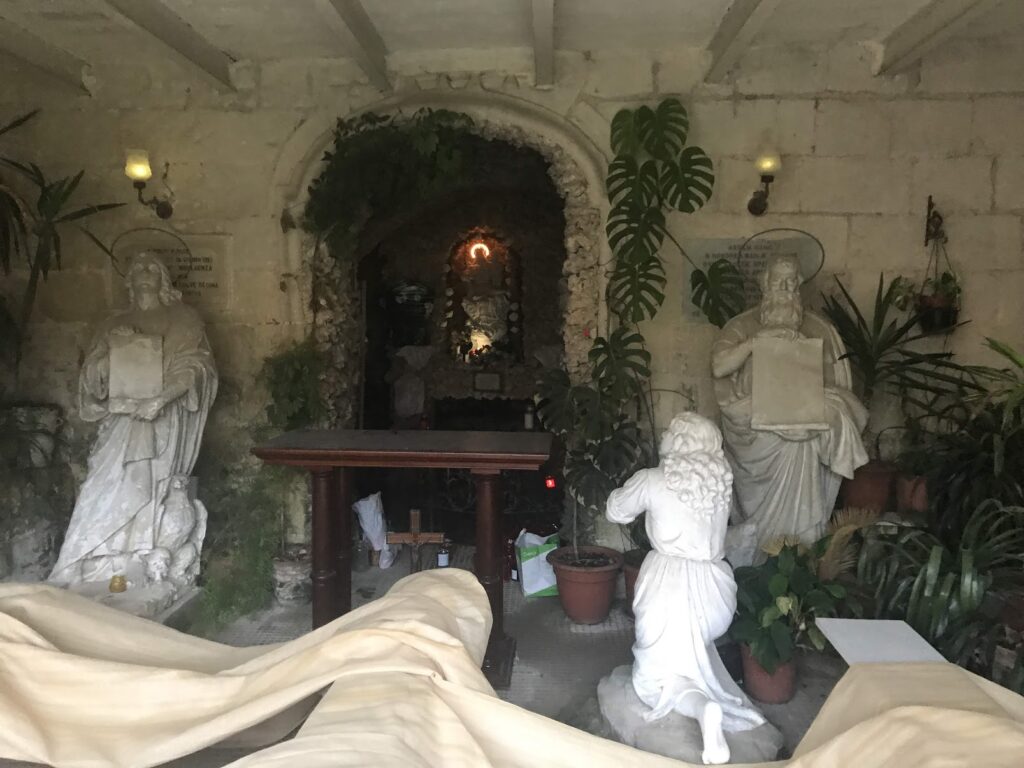
Our departure day was September 2nd. Our flight was at 11:25 am so we were on the move at about 8 am. After 9 days in Malta, we were returning to mainland Europe. Specifically, we had a flight to Budapest, Hungary. I know it is taking me a long time to get this posted. Budapest will be another post.

